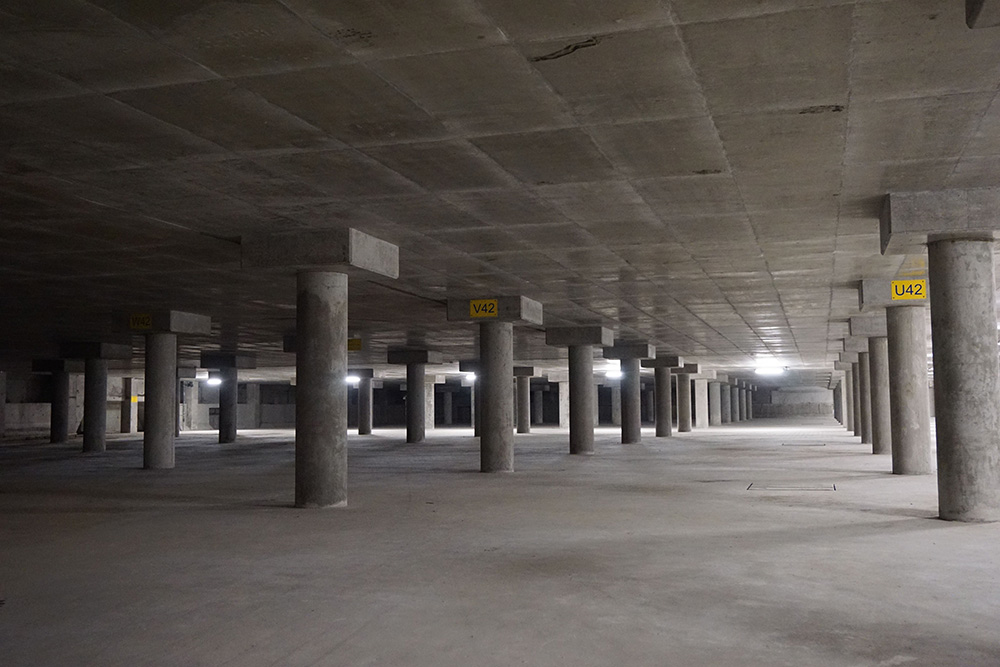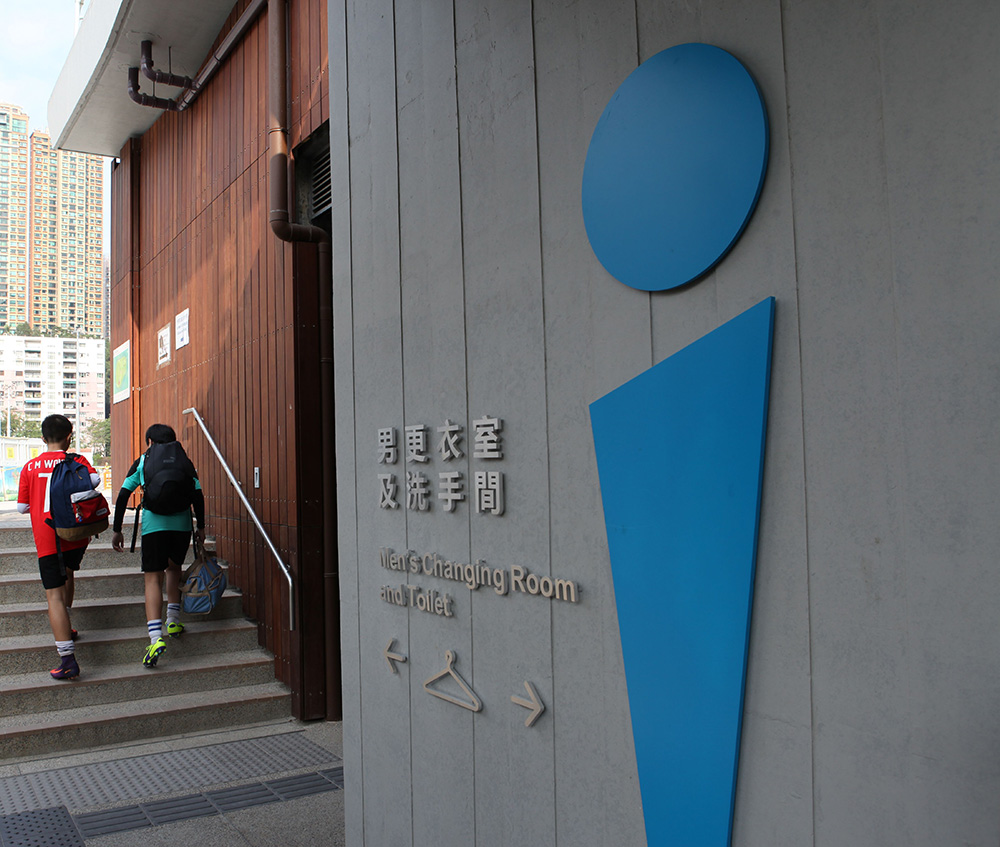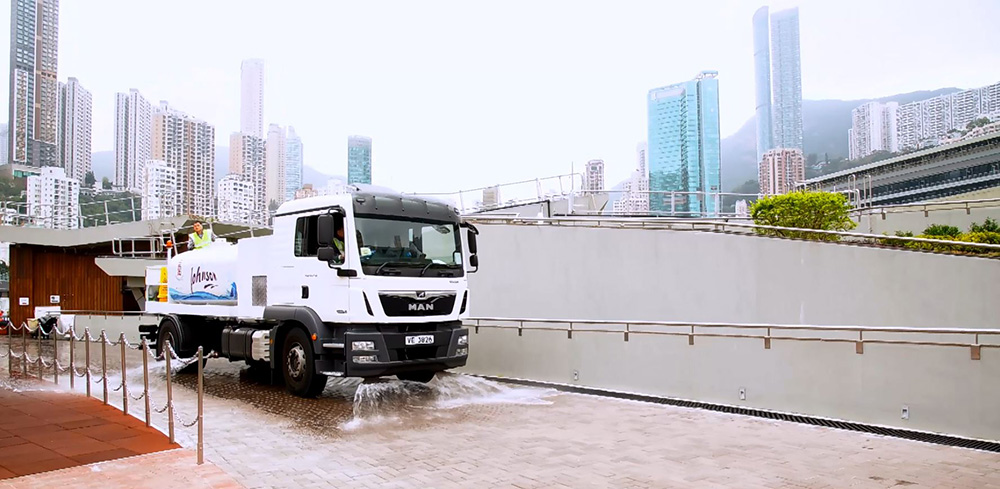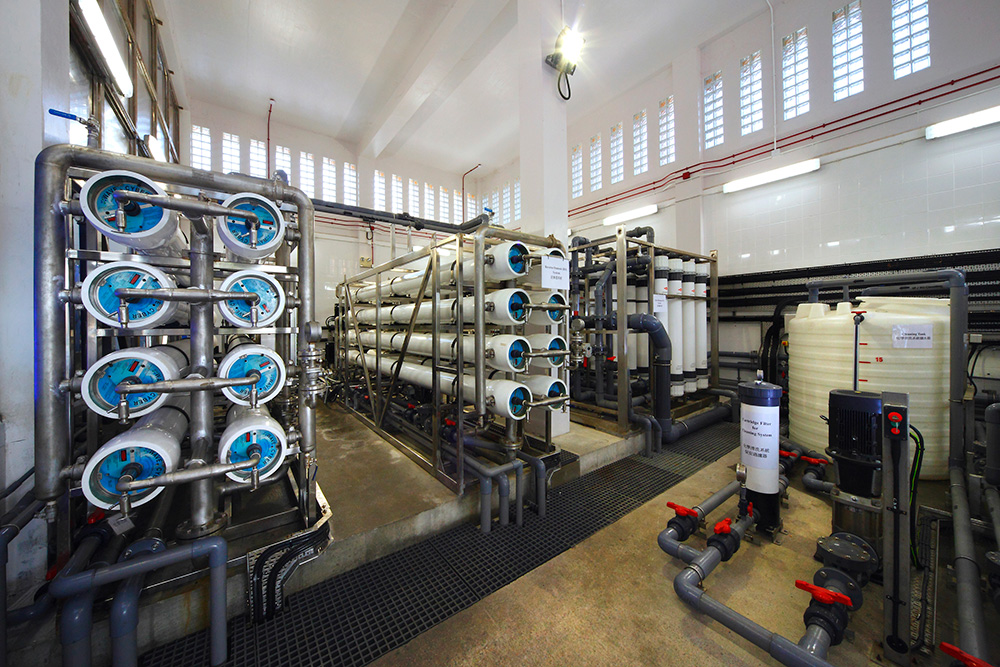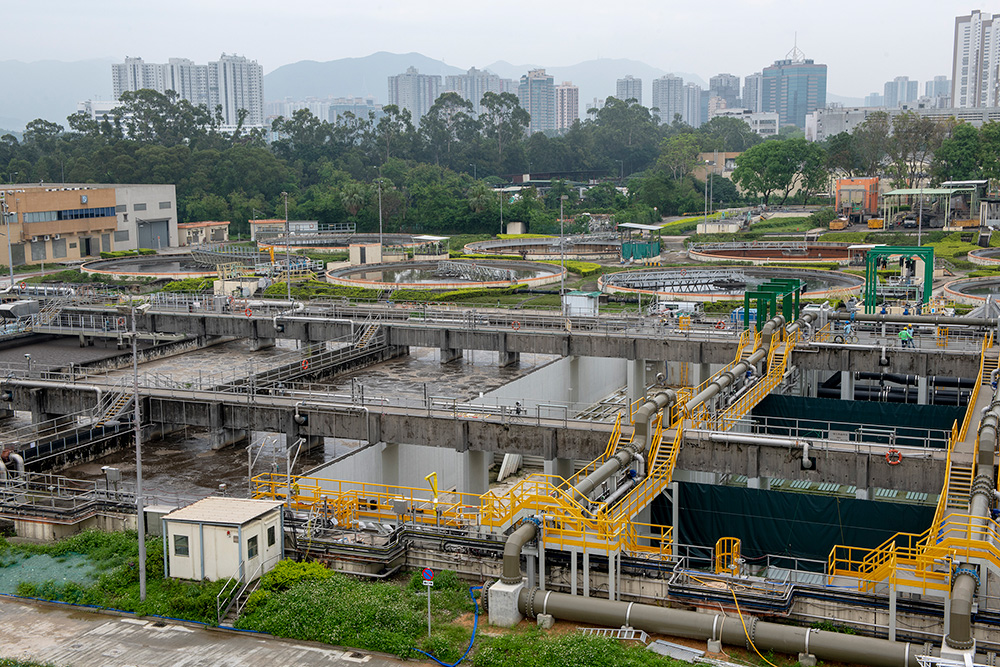Water Resources Management
DSD has incorporated sustainable water resources management concepts into its newly constructed facilities. Major elements in these designs include, rainwater harvesting systems, underground stormwater storage systems, rain gardens and porous pavements, etc. We aim to enhance the water efficiency at various facilities, and increase rainwater harvesting and reusability, by utilizing these systems. Between 2012 and 2016, various projects with the application of the above concepts have been completed including the Kowloon City No. 1 and No. 2 Sewage Pumping Stations, Lai Chi Kok Drainage Tunnel, and Happy Valley Underground Stormwater Storage Scheme (HVUSSS).
Furthermore, in support of the Government’s Total Water Management Strategy initiative via usage of reclaimed water, DSD continues to produce and use reclaimed water within its facilities and improve the operational reliability of its water reclamation facilities.
Water Harvesting System
Water Harvesting System of Happy Valley Underground Stormwater Storage Scheme
A water harvesting system is incorporated in HVUSSS for collecting groundwater, irrigation water and rainwater for reuse purposes. As the collected water is of better quality, simple disinfection treatment is sufficient to provide up-to-standard reclaimed water for non-potable use. Now, the collected water is being used for the irrigation of the 11 sport pitches and the landscape areas of the Happy Valley Recreation Ground (HVRG) are being irrigated with the reclaimed water, and for toilet flushing of the two changing rooms in the HVRG and two public toilets in the vicinity. The system also equips facilities to allow collection of the reclaimed water by the water tankers of the Food and Environmental Hygiene Department (FEHD) for street cleaning in the Happy Valley and Wan Chai districts.
Happy Valley Underground Stormwater Storage Tank
Reclaimed water is being used for toilet flushing in the changing rooms in the Happy Valley Recreation Ground
Food and Environmental Hygiene Department is using reclaimed water for street cleaning
Water Reclamation
Reclaimed water is the highly treated and disinfected effluent water which could be recycled for reuse. Reclaimed water not only could minimise pollution to the environment and avoid overloading of the ecosystem, it also relieves the demand on freshwater resource. This has provided favourable conditions for sustainable development and contributed to environmental protection.
In 2018-19, more than 1,800 cubic metres reclaimed water has been generated per day for non-potable use. The major water reclamation facilities are located in the Ngong Ping STW, Sha Tin STW and Pillar Point STW.
The Ngong Ping STW, operated since 2006, is the first tertiary sewage treatment plant in Hong Kong with reclaimed water treatment facility. The reclaimed water produced by this plant is safe and odourless. It is now supplied for toilet flushing at the Ngong Ping public toilets and the Ngong Ping Cable Car Terminal toilets. Some of the reclaimed water is used for rearing ornamental fish in fish ponds and controlled irrigation within the sewage treatment works. The water reclamation facility in the Shatin STW, was commissioned in early 2011. It can generate 1,000 cubic metres reclaimed water every day for plant cleaning, irrigation, toilet flushing and chemical dilution. The reused water in Pillar Point STW is now mainly used for chemical dilution.
Water reclamation facilities at Shatin Sewage Treatment Works
Shek Wu Hui STW Improvement Works
Furthermore, the Shek Wu Hui STW is being upgraded in stages to Shek Wu Hui Effluent Polishing Plant to enhance its treatment capability to tertiary treatment level. Its daily treatment capacity would also be increased to 190,000 cubic metres to cope with the ever-increasing sewage volume. Upon completion of the Shek Wu Hui Effluent Polishing Plant Improvement Scheme, part of the tertiary treated effluent will be further polished by the Water Supplies Department as reclaimed water and supplied to north-east New Territories, i.e. Sheung Shui and Fanling, for toilet flushing and other non-potable use. It is estimated that about 56,500 cubic metres reclaimed water could be produced per day, which could help to conserve our valuable potable water sources.



